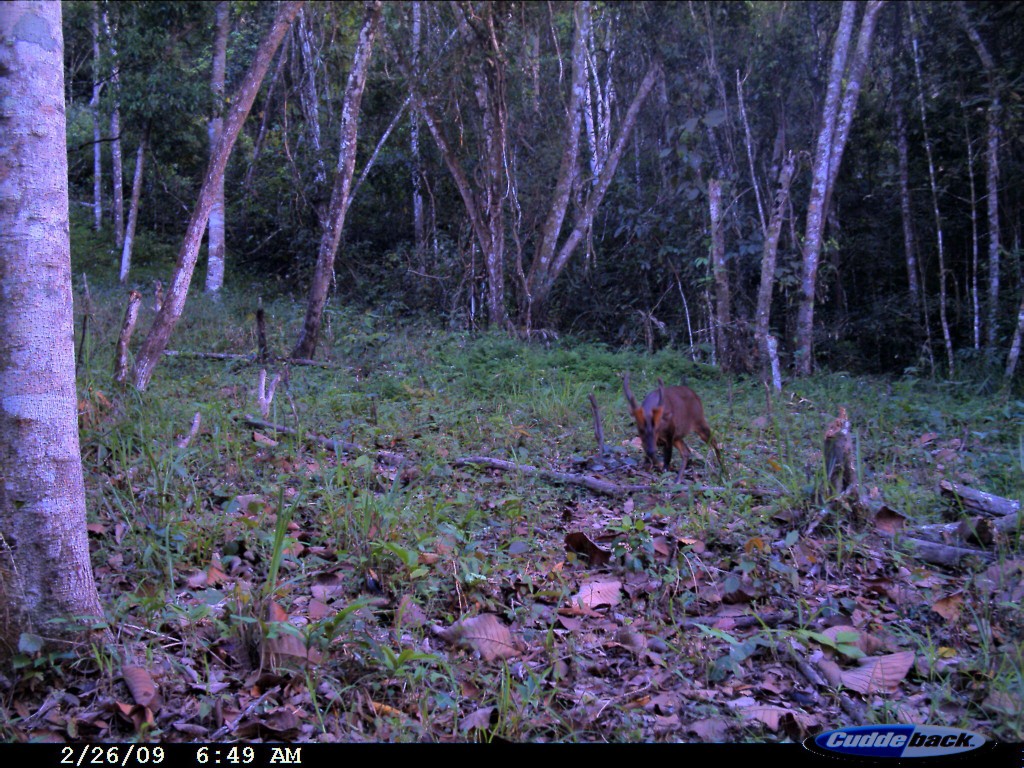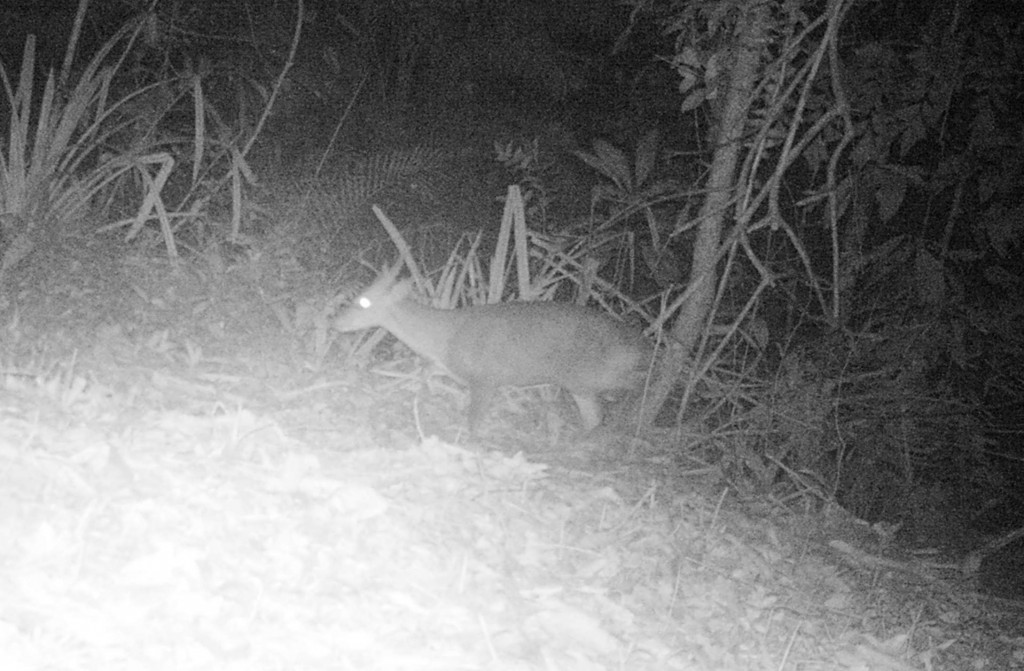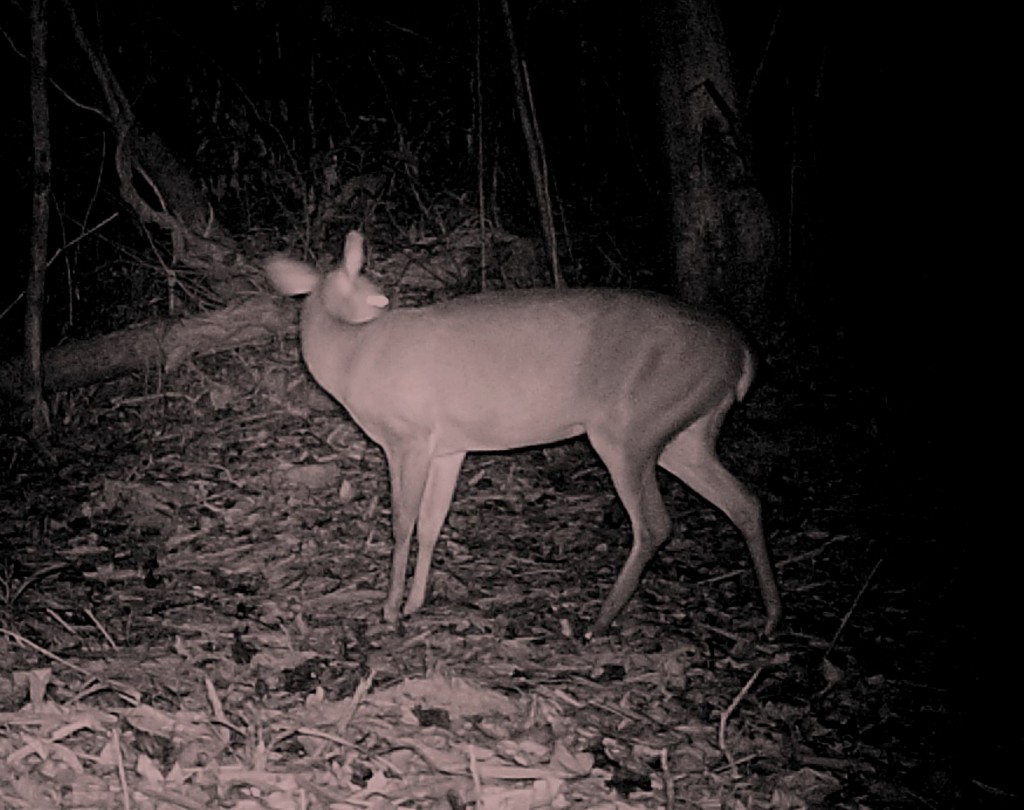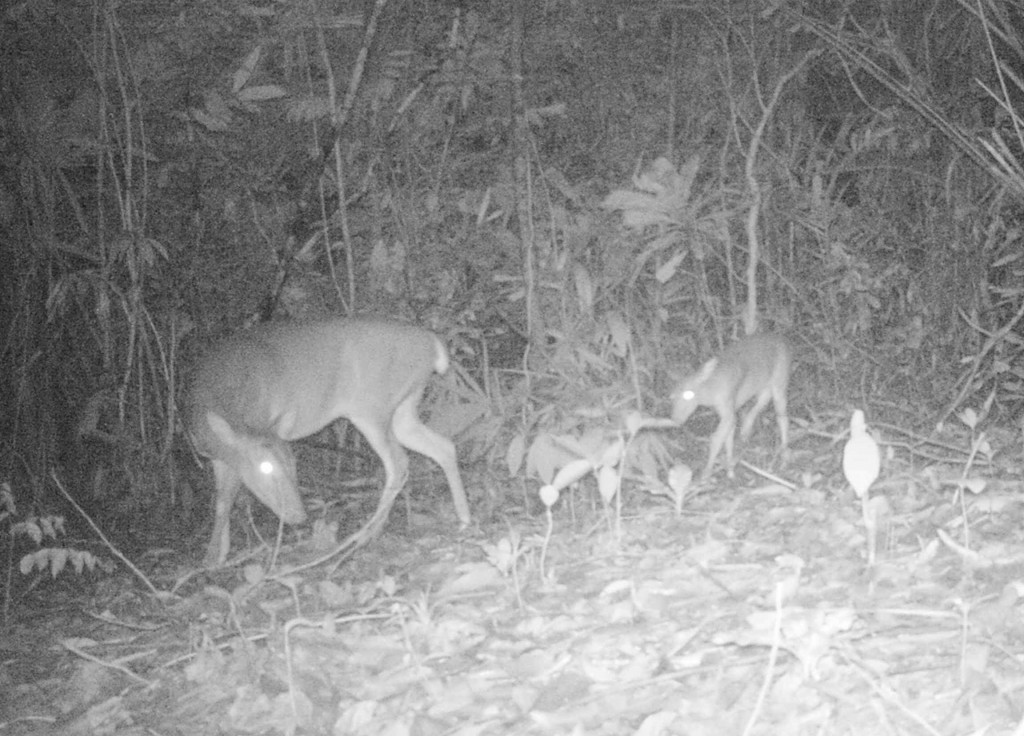The forest of Dong Chau – Khe Nuoc Trong in central Vietnam’s Quang Binh Province is one of the last refuges for some of the rarest mammals on Earth, including the little known and very elusive Large-antlered Muntjac Muntiacus vuquangensis. Over the past few years, Viet Nature has collected thousands of photos of the wildlife of central Vietnam using camera traps. These cameras are left in the forest and automatically take photos of passing animals. Among the many thousands of photos, is precious evidence of the survival of the Large-antlered Muntjac and other rare species.
The Large-antlered Muntjac is a small deer and one of several species of large mammals endemic to the Annamite Mountains of Vietnam and Laos. It was first described in 1994 from a skull and frontlet specimen found in Vu Quang National Park, Ha Tinh Province, Vietnam, but has never been seen in the wild by a scientist. It is heavily threatened by trapping and is listed globally as Critically Endangered by the IUCN, which is the highest threat ranking before being recognized as extinct in the wild. Thus it shares the same status as the enigmatic Saola Pseudoryx nghetinhensis, which is also endemic to the Annamites.
Viet Nature is the only organisation to have photos of the Large-antlered Muntjac in the wild. As an outcome of a GEF/World Bank project conducted by the BirdLife International Vietnam Programme (the organisation which was transformed into Viet Nature), the first photograph of the Large-antlered Muntjac in Vietnam was captured on 26 February 2009 in Chu Yang Sin National park in Dak Lak province (Photo 1).
Viet Nature has recently been conducting extensive camera trapping in the forests of central Vietnam, from Ha Tinh south to Thua Thien Hue, in the hope of finding evidence for the presence in the wild Edwards’s pheasants Lophura edwardsi. This bird, which is endemic to central Vietnam has not been recorded in the wild since 2000, and remains undetected so far. However, to date the camera trapping programme has been successful in taking photos of about seventy wild mammals and bird species, of which nineteen are listed by the IUCN as globally threatened on the Red List of Threatened Species. Among those photos, the Large-antlered Muntjac has only been recorded in Viet Nature‘s project area at Khe Nuoc Trong, Le Thuy district, Quang Binh province, at six different locations. Photos include one mature male (Photo 2), six mature females (Photo 3) and one infant beside its mother (Photo 4), which gives strong hope for the future of this species at Khe Nuoc Trong; if the threat from hunting can be stopped.
Mr Le Trong Trai, a leading ecologist and conservation planner, Director of Viet Nature Conservation Centre, said “Dong Chau-Khe Nuoc Trong might be the only area of lowland forest of central Vietnam with a viable population of the Large-antlered Muntjac. This area has significant conservation value at national and international levels; therefore it deserves to be prioritized for protection”.
The camera trapping programme is still in process and being extended over central Vietnam. It is expected that the programme will continue to gather more actual evidence of the presence of important wildlife for conservation and so guide conservation activities in Vietnam.
Photo 1: Large-antlered Muntjac Muntiacus vuquangensis (male) captured in Chu Yang Sin National Park in 2009 Photo 2: Large-antlered Muntjac (male) captured in Khe Nuoc Trong, Le Thuy district,
Photo 2: Large-antlered Muntjac (male) captured in Khe Nuoc Trong, Le Thuy district,
Quang Binh province (2014) Photo 3: Large-antlered Muntjac (female) captured in Khe Nuoc Trong, Le Thuy district,
Photo 3: Large-antlered Muntjac (female) captured in Khe Nuoc Trong, Le Thuy district,
Quang Binh province (2014)
 Photo 4: Large-antlered Muntjac (female) and her infant captured in Khe Nuoc Trong, Le Thuy district, Quang Binh province (2014)
Photo 4: Large-antlered Muntjac (female) and her infant captured in Khe Nuoc Trong, Le Thuy district, Quang Binh province (2014) 
